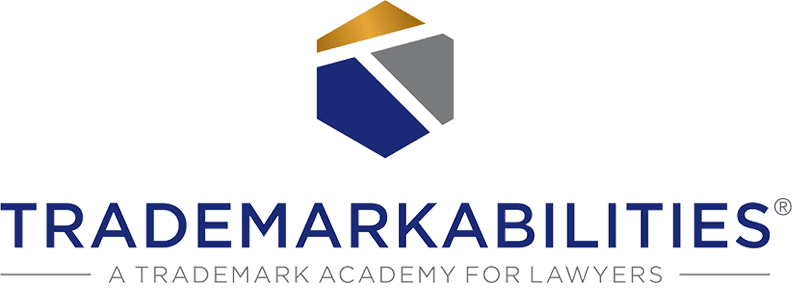The Trademark Modernization Act of 2020 (“TMA”) was passed by the U.S. Congress on December 27, 2020 as part of the huge COVID relief package that sent most Americans an additional $600 stimulus check. Although the changes will not be implemented at the USPTO until December 27, 2021, there are several sweeping changes that will be forthcoming.
The Trademark Modernization Act helps trademark owners cancel unused trademarks
In the United States, there is a three-year presumption of abandonment if a trademark owner does not use its mark in connection with its goods and services. This three-year period now has even more significance under the new Trademark Modernization Act. The TMA imposes two new types of ex parte post-registration proceedings to cancel unused trademarks. The first is an expungement or removal proceeding which will be brought before the Trademark Trial and Appeal Board (“TTAB”). With this type of proceeding, if the registrant never used the mark in connection with the goods or services in the registration, any third party can bring this expungement proceeding between three and nine years after the certificate of registration issues. This method will be particularly helpful to remove any foreign owned registrations issued under the Madrid Protocol or Section 44. The second way is to request reexamination. A third party can request that some or all of the goods or services be removed if they were not used in connection with the registered mark prior to a particular date. Reexamination must be brought within the first five years following registration and would apply only to applications that were filed based on use, on intent to use where an amendment to allege use was filed, or where the time period to file a statement of use expired.
Trademark owners will have a new ground to cancel a registration
Under the Trademark Modernization Act, third parties will have a new ground to bring a cancellation action before the TTAB. This will be similar to the expungement action mentioned above except in this proceeding the petitioner will allege the mark has never been used in commerce. This cancellation can be instituted at any time three or more years after the registration issues.
Letters of Protest can be used to object to pending applications
It’s clear that the main objective of the TMA is to address unused trademarks and fake specimens. In fact, the USPTO announced it was disbanding its specimen protest email pilot program on February 16, 2021. The cessation of this program is due to the statutory authority in the TMA to recognize the long-standing USPTO practice of allowing third parties to submit evidence to the USPTO prior to the registration of a mark, including objecting to the use of digitally altered specimens. The TMA codifies that the USPTO must respond to Letters of Protest within 60 days and may charge a fee for Letters of Protest. That fee is currently set at $50.
The USPTO may establish flexible response times for Office Actions
Currently, Office Action response times are set at six months from the date of issue. The TMA would allow the USPTO to set Office Action response times to no less than sixty days. Extensions would be available for up to six months with payment of an additional fee. There is no word yet from the USPTO on how they will implement this provision of the TMA. This provision and timing might be acceptable for responding to purely administrative Office Actions, but for substantive refusals or for foreign clients who typically work through foreign counsel, this provision will require an organized, coordinated approach to ensure a timely response can be prepared and filed within the initial 60 days, if that is what the USPTO sets as the initial response period.
The Trademark Modernization Act helps when seeking injunctive relief
One of the most anticipated changes of the TMA is that it creates a uniform rule benefitting trademark owners seeking injunctions in Federal Court. The TMA will return to the previous practice of applying a rebuttable presumption of irreparable harm upon a finding of likelihood of confusion or when successfully prevailing on the merits. This could be a game changer for many seeking temporary restraining orders or preliminary injunctions as each U.S. Circuit Court of Appeals will be applying the same rules once the TMA becomes effective. The TMA will resolve the inconsistent rulings resulting from applying the U.S. Supreme Court’s decisions in eBay Inc. v. MercExchange, L.L.C. and Winter v. Natural Resources Defense Council, Inc. to trademark injunction requests.
Summary
Some help is on the way for trademark owners who repeatedly have their applications blocked by foreign owned applications that are not in use or are registered using fake and/or altered specimens. Even though the TMA will be a new addition to the trademark attorney’s tool chest, trademark owners will incur additional costs if they choose to remove or expunge any unused registrations from the Register.
For foreign trademark owners, even though proof of use is not required before a registration will issue, trademark counsel should underscore enough the importance of ensuring the identification of goods and services you adopt in the U.S. is narrowly tailored to reflect the actual use you (or your client) intend to have in the U.S. within three years. Mirroring a broadly filed home country-based registration could expose the registration to expungement or cancellation and add increased costs to the process.
Want to Learn More?
If you would like to learn more about how the TMA will impact the trademark application process and other trademark application filing tips, consider joining our Trademarkabilities® Masterclass. You learn more about our courses here to enroll or reach out to us for more information. Or, you can join our mailing list, and download our free e-guide “5 Tips for Trademark Attorney Success.”

Stacey C. Kalamaras is the founder and lead instructor of Trademarkabilities®, an online trademark academy for lawyers, whose mission it is to prepare lawyers to be confident and effective practitioners before the USPTO. Stacey started Trademarkabilities to share her passion teaching the law with the next generation of lawyers and help them become practice ready lawyers. Contact us at: hello@trademarkabilities.com.
Stacey is also a seasoned trademark attorney and currently works in-house as Senior Counsel for a multi-national candy company. She previously owned her own solo trademark practice, which she scaled and sold. She has been recognized by her peers for her outstanding knowledge and service in intellectual property law.

